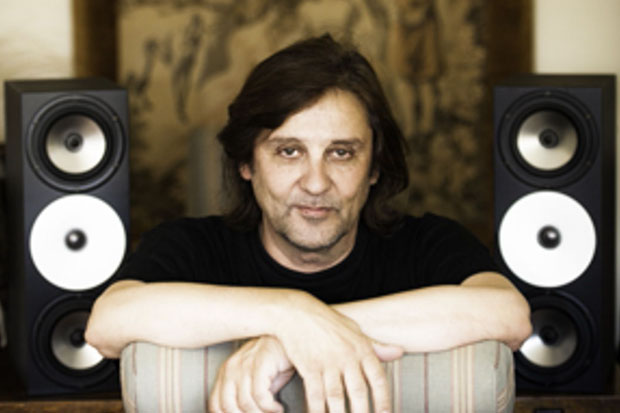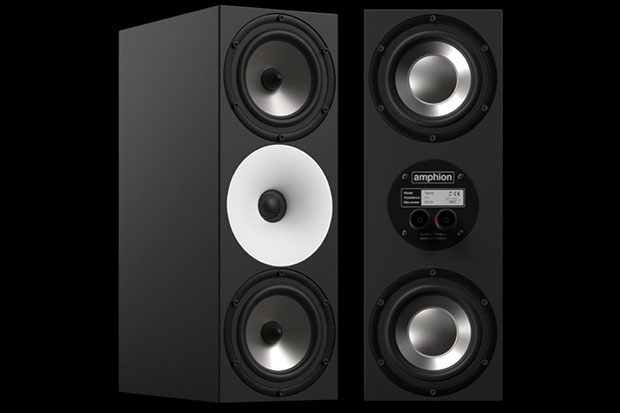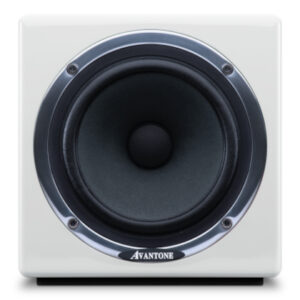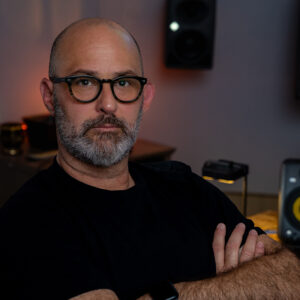
We only recommend products that we use and believe in. When you purchase through links on our site, we may earn an affiliate commission.
The Amphion Two15s show minute nuances that support the diverse demands of the musician, audio engineer and sound composer
Musician and audio engineer Jussi Tegelman was born and raised in Finland, not far from loudspeaker manufacturer Amphion’s original headquarters. Though it wasn’t until many years later, long after he had relocated to the Los Angeles area where he now works in film and television audio post production, that he got to hear Amphion studio monitors in action for the very first time. “I just fell in love with them,” says Tegelman, who has a pair of Amphion Two15s in his home studio just north of L.A.
Amphion introduced the company’s first studio loudspeakers in 2014 and it was shortly after that, when company founder and CEO Anssi Hyvönen visited California to introduce the new products to professional users, such as mastering engineer Bernie Grundman and producer Rick Rubin, that Tegelman had an opportunity to check them out. At the time, he was already well established in the audio post industry having worked in a variety of capacities — as sound editor, sound designer, supervising sound editor or re-recording mixer — on projects such as Spider-man 2 and Spider-man 3, Priest and Oz the Great and Powerful. He continues to work on occasional music projects.
A revelatory demonstration
“I had just finished mixing an acoustic jazz record for some friends of mine when Anssi contacted me,” Tegelman recalls. “We put up that record on the Amphions and my jaw dropped. The reason that Amphions are so good for music is because they are very sensitive and reactive. The tracks immediately sounded fantastic. It didn’t sound totally different to what I was used to, but it was so much better. It was like a high-resolution image of what I had done.”
The recordings sounded great, as they had on the monitors that he had used to mix the project, he continues. “But I could tell what I should have been doing with the low end of the upright bass; I could have been much braver. I could pinpoint the frequencies immediately. And that blew me away.” The demonstration was enough to convince Tegelman to install a pair of first-generation Two15 speakers. To this day, he says, “They give me this clear image without coloring what I’m doing. Now I tell people, maybe my mixes are better nowadays, but it’s not just me — it’s also the Amphions.”
Fans of progressive and hard rock may be familiar with Tegelman’s work as a musician. Jussi, a jazz and rock drummer and percussionist, and his twin brother, Pekka, a guitarist, formed Finnforest in 1972 while in their late teens and released several albums before splitting up in 1978. Jussi went on to build a recording studio in their hometown. “I was the kid who was always asking the mix engineer, ‘What are you doing?’ So I built a studio. I was the guy with two Revox tape machines making all the demos,” he says. He eventually left the studio in the capable hands of the twins’ younger brother, who continued to run the facility for 30 years.
In the early 1990s, Tegelman’s band at the time, Havana Black, signed to Capitol Records and with Guns N’ Roses and Great White manager Alan Niven, who brought them to L.A. “To make a long story short, my path separated with the band, and I stayed here and went back to working in recording studios,” he says.
A separate, cinematic path
Tegelman also continued to perform, and it was a bandmate, also an audio engineer, who introduced him to the world of post-production. “I started learning on the job,” he says, although most of the projects were never destined for box office success. “Then a good film came along: Sofia Coppola’s The Virgin Suicides. I did basic sound editorial on that and thought, ‘This job can be cool.’ So I worked hard, worked with some good sound supervisors and it grew from there.”
His big break came when another friend, a supervising sound editor, hired him for a sound effects editorial gig at Sony Pictures working on director Sam Raimi’s Spider-man 2 in 2004. “I’ve been working with Sam ever since,” he says. Tegelman went on to be Raimi’s supervising sound editor on Drag Me to Hell (2010), Oz the Great and Powerful (2013) and Ash vs. Evil Dead (2015).

The Amphion Two15s proved especially useful on a challenging audio post job that Tegelman took on with Raimi’s longtime picture editor, Bob Murawski, cleaning up and restoring an hours-long conversation between film legend Orson Welles and actor Dennis Hopper. The conversation, about movies, art and life, was not originally intended for release and was filmed in 1970 in a dark room lit only by noisy hurricane lamps.
“Orson was in the corner, totally off mic,” says Tegelman, who was the sound designer and re-recording mixer for the two-hour documentary, Hopper/Welles, which was released in 2020. “I spent a month, month and a half, trying to figure out how to bring Orson up so we could hear him. I went hardcore with iZotope RX and EQs and transient designers. And I did that mainly on the Amphions because I could really hear the details.”
Tegelman just recently completed sound design for actress Anna Kendrick’s directorial debut, Woman of the Hour. “I edited everything and did the predub at home,” he says, then mixed it at a commercial facility in Burbank. The film, in which Kendrick also stars, premiered in early September at the 2023 Toronto International Film Festival.
About Amphion
Amphion Loudspeakers Ltd. was established in 1998. We design and build loudspeakers that are characterized by honest and accurate sound reproduction. Precise driver integration ensures world-class imaging and phase coherency. Controlled dispersion technology helps achieve more stable results in a variety of room acoustics. All products are handmade in Finland (and the Amphion amplifiers are assembled in Finland) to ensure enduring listening quality.



